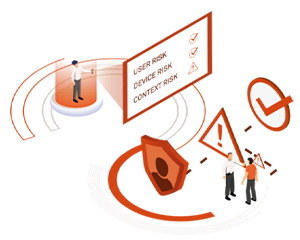 strengthen security
strengthen security
Appgate SDP makes resources invisible until trust is established using dynamic policies, based on user identity and device posture. Network and application access is segmented and conditional, minimizing the risk of lateral movement.
 reduce complexity
reduce complexity
Appgate SDP unifies access with a single policy engine for all users, devices, networks and heterogenous environments. Access can be automated and dynamically scale by deploying security-as-code.
 streamline automation
streamline automation
Appgate SDP weaves into the fabric of your business systems with bi-directional APIs allowing policies and access to be automated. Common integrations include, but are not limited to, EUBA, NAV, AV, EDR, EPP, IAM, IdP, SSO, MFA, LDAP, SAML, RADIUS, ITSM, BSS, SIEM, etc.










